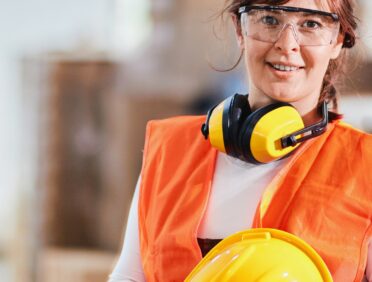Every element of our lives should place a high focus on health and safety. The safety of people and communities is essential, whether it is at work, at home, or in public areas. Health and safety standards are strongly upheld in the United Kingdom and backed by pertinent laws and regulations.
This article examines the significance of placing a high priority on health and safety at work, emphasising the function of risk assessments and employee rights and obligations.
The UK’s Commitment to Health and Safety
The UK has a long tradition of putting health and safety first because it understands how important a safe and healthy environment is to the wellbeing of its people. To guarantee the application and enforcement of health and safety procedures across numerous industries, the government has taken proactive measures.
The main body in charge of enforcing and promoting health and safety in the UK is the Health and Safety Executive (HSE). This organisation collaborates with governmental organisations, businesses, and workers to create and implement rules that safeguard people from workplace dangers and advance general wellbeing.
Significance of Legislation and Regulations
The UK has implemented many laws and rules to properly manage health and safety concerns. These regulations give employers, workers, and other stakeholders a foundation for understanding their obligations in upholding a safe and healthy workplace.
The legal responsibility for businesses to guarantee the health, safety, and welfare of their employees and those affected by their operations is outlined in important legislation, such as the Health and Safety at Work etc. Act 1974. The obligation for risk assessments and management mechanisms in workplaces is further explained in the Health and Safety at Work Regulations (1999).
Other laws, such as the Workplace (Health, Safety, and Welfare) Act of 1974 and the Control of Substances Hazardous to Health (COSHH) Regulations 2002, and other regulations, like the Workplace (Health, Safety and Welfare) Regulations 1992 concentrate on particular aspects of health and safety, like the control of hazardous substances and the provision of safe and suitable working conditions.
Additionally, the 2013 Reporting of Injuries, Diseases, and Dangerous Occurrences Regulations (RIDDOR) require that specific incidents, injuries, and diseases be reported to the appropriate authorities in order to facilitate data collection, foster a culture of openness, and advance continuous improvement.
These laws and rules are essential in influencing health and safety procedures in all industries, making sure that people and businesses are held responsible for upholding safe working conditions. They offer a structure for risk evaluation, hazard mitigation, and emergency preparedness, all of which contribute to a safer and healthier society.
The UK’s Commitment to Health and Safety
In all facets of life, health and safety should come first as vital concerns. The highest levels of health and safety are something that the United Kingdom has long been committed to sustaining. The historical development of health and safety procedures, government programmes, and cooperation between many stakeholders all demonstrate this commitment.
Historical Context and Evolution of Health and Safety Practises
When dangerous working conditions became the norm during the Industrial Revolution, the UK began its journey towards prioritising health and safety. The necessity for safeguards became clear as awareness of the negative impacts of such workplaces on workers’ wellbeing developed. This prompted the gradual creation of rules and regulations to protect the health and safety of workers.
Government Initiatives and Regulatory Agencies
The UK government has continually implemented numerous measures and established regulatory agencies to show its commitment to health and safety. All citizens will benefit from these measures by creating a secure and healthy environment.
The cornerstone of UK health and safety law is the Health and Safety at Work etc. Act 1974. The obligations of employers, employees, and other parties involved in work activities are established, and the legal framework is laid forth. The statute highlights the duty of care owed to employees as well as the significance of risk assessment and control methods.
Primary Authority: The Health and Safety Executive (HSE)
The Health and Safety Executive (HSE) holds a pivotal role as the primary authority responsible for regulating and promoting health and safety in the UK. It operates independently under the oversight of the Department for Work and Pensions. The HSE’s primary goal is to prevent work-related accidents, injuries, and illnesses by enforcing health and safety regulations.
The HSE plays a vital role in developing and implementing policies, conducting inspections, and raising awareness about health and safety practises. It provides guidance and support to employers, employees, and the general public, fostering a culture of safety and well-being.
Collaboration for Health and Safety
Beyond government initiatives, the UK is dedicated to health and safety. Effective health and safety procedures must be implemented in all industries, and this requires cooperation between the government, employers, and employees.
To create and enforce regulations, carry out inspections, and offer direction, government agencies collaborate closely with employers. To guarantee the welfare of their employees, employers have a moral and legal duty to establish safe working conditions, carry out risk assessments, and offer the required training and resources.
Employees have a crucial role as well. They are urged to take an active role in upholding health and safety standards, report dangers and events, and follow set rules and procedures.
Enhancing Health and Safety in the UK: Legislation and Regulations
The United Kingdom’s strict legislation and regulations demonstrate its dedication to health and safety. These legislative frameworks are essential for creating a safe and healthy environment in many different fields.
We will give an overview of the main laws and regulations in the UK, describe their goals and clauses, and talk about how they affect promoting health and safety.
Overview of Key Legislation and Regulations
Health and Safety at Work, etc. Act, 1974
The cornerstone of UK health and safety law is the Health and Safety at Work etc. Act 1974. The framework established by law to protect people’s welfare, health, and safety on the job and elsewhere. The Act imposes obligations on employers, workers, and independent contractors while highlighting the necessity of risk assessment, hazard control, and the availability of appropriate resources.
Management of Health and Safety at Work Regulations 1999
The Management of Health and Safety at Work Regulations 1999 strengthen the duties of the Health and Safety at Work etc. Act 1974. In addition to stressing the significance of detecting dangers, putting control measures in place, and routinely reviewing and updating safety regulations, they lay out the fundamental concepts of risk assessment and management. The regulations also call for the hiring of qualified people to manage these procedures and the requirement for health and safety training.
Control of Substances Hazardous to Health (COSHH) Regulation 2002
The Control of Substances Hazardous to Health (COSHH) Regulations 2002 are designed to safeguard employees from the dangers posed by dangerous substances. Employers must evaluate and limit employee exposure to hazardous substances, give workers information and training, put control mechanisms into place, and frequently monitor and reassess these controls. The rules cover a wide spectrum of contaminants, including chemicals, gases, dust, and biological agents.
The Workplace (Health, Safety and Welfare) Regulations 1992
The main goal of the Workplace (Health, Safety and Welfare) Regulations 1992 is to guarantee secure and healthy working conditions. They cover a number of topics, including lighting, cleanliness, temperature, ventilation, and welfare amenities. Employers must maintain equipment, offer safe working conditions, and guarantee employee wellbeing under the regulations.
Reporting of Injuries, Diseases and Dangerous Occurrences Regulations 2013 (RIDDOR)
2013 Reporting of Injuries, Diseases, and Dangerous Occurrences Regulations (RIDDOR) requires the reporting of a number of occupational events, illnesses, injuries, and potentially harmful situations. It makes sure the right authorities are aware of significant situations, allowing them to look into them and take the necessary action. To improve overall health and safety, the regulation aids in data collection, trend identification, and preventative measure execution.
Impact of Legislation and Regulations
Health and safety laws and regulations in the UK have a big impact on keeping workplaces safe across all industries. They lay forth specific obligations for employers, staff members, and other stakeholders, promoting a culture of accountability and ongoing development.
These legislative frameworks offer a methodical approach to risk assessment and control, making sure hazards are recognised and the right countermeasures are put in place to reduce risks. Additionally, they support education and training, giving people the tools they need to make workplaces safer.
Businesses may improve their reputation, boost employee morale, and lower the cost of workplace accidents and illnesses by adhering to these standards. The legislation also makes it easier for the government to monitor compliance, enforce standards, and take the required steps to protect health and safety.
Health and Safety in the Workplace
For the wellbeing and productivity of employees, it is crucial to create a safe and healthy work environment. Employers in the United Kingdom are subject to specific duties and obligations with regard to protecting the health and safety of their employees.
Employer Responsibilities and Obligations
Employers have a moral and legal obligation to put their employees’ health and safety first. This entails creating a secure working environment, performing risk assessments, putting control measures in place, and making sure there is enough training and equipment. Additionally, employers must promote a culture of continuous improvement by reviewing and updating their health and safety regulations frequently.
The Role of Risk Assessments and Control Measures
A key method for locating workplace hazards and assessing potential dangers is risk assessment. Employers can proactively identify areas of concern and adopt suitable control measures by conducting detailed risk assessments. Physical safeguards, appropriate instruction, personal protective equipment (PPE), and emergency response plans are a few examples of these precautions. To maintain a safe working environment, control mechanisms must be monitored and reviewed on a regular basis.
Employee Rights and Responsibilities
Additionally, employees are essential to maintaining a secure workplace. They should take an active role in promoting health and safety procedures because they have the right to a safe and healthy workplace. Employees are required to follow established safety procedures, promptly report dangers or accidents, and appropriately use any provided safety equipment. Employees should also actively participate in safety training and offer comments to help make workplace safety measures better.
Health and Safety in the Community
Health and safety ought to pervade all areas of our lives, including public areas, recreational areas, and modes of transportation, in addition to the workplace. For people’s security and well-being, the community must actively promote health and safety awareness.
We will examine the significance of health and safety outside of the workplace, emphasising considerations in public areas, the function of community engagement and education programmes, and the significance of cooperation between local government, private industry, and the general public.
The Importance of Health and Safety Awareness Beyond the Workplace
While workplace security is crucial, maintaining health and safety in public areas is just as crucial. Outside of work, people spend a lot of time commuting, using public transportation, and participating in leisure activities. We can reduce dangers and provide secure conditions for all community members by promoting health and safety awareness in these situations.
Health and Safety Considerations in Public Spaces, Leisure Facilities, and Transportation
Health and safety should come first in public locations, including parks, retail stores, and recreation facilities. This includes keeping spaces well lit, walkways in good condition, and clear signage for emergency exits. Leisure facilities like swimming pools and gyms should follow stringent safety regulations, making sure the equipment is maintained, lifeguards are on duty, and the appropriate sanitary procedures are in place.
Passenger safety should be given more priority by transportation system operators through routine maintenance, staff training, and obvious safety recommendations.
Promoting Safety Through Education and Community Engagement programmes
Promoting community health and safety depends heavily on education and community involvement. It is important for local organisations, schools, and community centres to offer educational programmes that inform people about potential risks, emergency response protocols, and preventive measures. By educating and equipping community members, we can foster a culture of safety consciousness that permeates all facets of daily life.
Collaboration Between Local Authorities, Businesses, and Citizens
Local government, industry, and individuals must work together to create safe neighbourhoods. Health and safety in public areas should be prioritised by local authorities in their development of rules and policies. Businesses should adhere to safety regulations and actively participate in risk assessment and mitigation activities, including recreational facilities and transport providers.
Reporting safety issues, taking part in community projects, and acting responsibly are all ways that citizens can participate. We can make sure that health and safety are at the top of the list of community priorities by encouraging a sense of shared responsibility.
Health and Safety in the Home
Beyond the workplace and public areas, our homes and educational institutions must also take health and safety into account. For people’s wellbeing in these situations, it is essential to provide secure surroundings.
We will talk about typical risks and prevention techniques as we examine the importance of health and safety in homes. Additionally, it highlights the duties of schools, staff training, and confronting new difficulties as it looks at the significance of safety precautions in educational environments.
Recognising the Significance
Given that we spend a lot of time at home, health and safety in domestic settings are of the utmost significance. It is essential to provide a safe living environment in order to avoid accidents and advance the wellbeing of individuals and families.
Common Hazards and Prevention Strategies
Slips and falls, burns, electrical mishaps, and poisoning are typical household hazards. Maintaining clean and clutter-free environments, installing safety equipment like smoke alarms and carbon monoxide detectors, exercising correct food handling and storage, and keeping dangerous materials out of children’s reach are all part of effective prevention tactics.
Raising Awareness and Resources
Raising awareness of health and safety practises in households is largely accomplished through public campaigns and resources. People can be empowered to create safer living environments through programmes that offer educational materials, online resources, and advice on risk assessment and prevention techniques.
Encouraging Responsible behaviour
Families and individuals must be accountable for their own health and security at home. This entails acting responsibly, such as by making proper use of safety equipment, keeping an eye out for potential dangers, and taking care of maintenance concerns as soon as they arise to reduce risks.
Health and Safety in Education Settings
For the welfare and success of students and staff in educational settings, it is crucial to create a safe and secure learning environment. The implementation of health and safety procedures is essential to ensuring the physical, emotional, and psychological safety of all parties involved. Schools and educational institutions play a key role in this process.
We will go into detail about the value of creating a safe learning environment, the duties of schools in putting health and safety measures into place, the significance of providing training and support for teachers and staff, and how to deal with newly emerging challenges like online safety and mental health issues.
Ensuring a Safe Learning Environment for Students and Staff
In educational settings, the wellbeing and safety of both students and staff should come first. Schools must maintain secure premises, put safety measures in place to stop accidents and injuries, and make sure the right emergency response procedures are in place to cultivate a physically safe environment. Equally crucial are emotional and psychological safety, which calls for measures to stop bullying, harassment, and discrimination as well as the promotion of an accepting and encouraging culture.
The Role of Schools and Educational Institutions
It is the duty of educational institutions like schools to effectively enforce health and safety regulations. This entails creating thorough rules and procedures that comply with regional laws and industry standards. Regular risk assessments should be carried out to find potential hazards and reduce them. In order to inform students, staff, and parents on safety procedures and to make sure that everyone is aware of their duties and responsibilities, schools should also develop clear communication channels.
Training and Support for Teachers and Staff
In order to establish and preserve a culture of safety in educational environments, teachers and staff are absolutely essential. They should receive thorough instruction on health and safety practises, including knowledge of potential risks, first aid instruction, and emergency response protocols.
To enable educators to notice and successfully handle safety concerns, ongoing assistance and professional development opportunities should be offered.
Addressing Emerging Challenges
There are new problems in educational settings that need special attention. The increased adoption of technology in schools has made online safety more and more crucial. Schools should put safety measures in place to safeguard kids from threats they may encounter online, such as cyberbullying, objectionable material, and online predators. As the wellbeing of students and staff has a direct impact on the learning environment, mental health issues are also essential.
Schools should place a high priority on mental health support services, encourage wellness programmes, and create a safe, loving environment for all students.
Health and Safety in Healthcare Settings
Due to the vital nature of the services offered, healthcare environments, including hospitals, clinics, and care facilities, require extra attention to health and safety. It is crucial to protect everyone’s health, including patients and medical staff.
We’ll look at the special health and safety considerations that apply to healthcare facilities, putting an emphasis on employee education, risk management, and ongoing safety practise improvement.
Special Considerations for Health and Safety in Healthcare Facilities
Because of the dynamic and high-risk environment in which healthcare facilities operate, special health and safety considerations are required. These involve maintaining a safe and secure physical environment, managing hazardous substances effectively, adhering to strict cleanliness regulations, and taking ergonomic measures to prevent injuries.
Adherence to Infection Control Measures and Patient Safety Protocols
One essential component of healthcare safety is infection control. To reduce the risk of infection-related complications in healthcare settings, strict infection prevention and control methods must be implemented. This involves using personal protective equipment (PPE) properly, washing your hands frequently, sterilising medical equipment, and following guidelines for isolating infected patients.
Guidelines for patient safety, such as precise medicine delivery and patient identification processes, are essential for avoiding mistakes and unfavourable outcomes.
Importance of Staff Training, PPE, and Risk Management
Healthcare staff that have completed rigorous training must comprehend and adhere to health and safety rules. Infection control, correct handling and disposal of hazardous chemicals, safe patient care skills, and emergency response protocols should all be covered in training programmes. It’s crucial to have access to the right PPE, such as gloves, masks, and gowns, to protect patients and healthcare staff from potential dangers.
Effective risk management techniques, such as danger spotting, evaluation, and mitigation, must be included in routine operations.
Continuous Improvement in Healthcare Safety Practises
It is important for healthcare facilities to continually improve their safety procedures. This can be accomplished by conducting routine safety procedure audits and checks, reporting and analysing incidents, and putting evidence-based practises into practise. The continuing improvement of healthcare safety can be facilitated by involving healthcare personnel in the creation of safety initiatives and encouraging an open culture of learning.
Health and Safety in Construction and Manufacturing Industries
The industrial and construction sectors are important engines of economic expansion. These fields do, however, also carry some inherent dangers and difficulties. To protect the welfare of employees, health and safety must come first on building sites and in manufacturing facilities.
We will discuss the specific risks and challenges that the manufacturing and construction industries face, the industry standards and regulations in place, the significance of safety training, tools, and monitoring systems, and success stories in putting health and safety practises into practise.
Unique Challenges and Risks in Construction and Manufacturing Sectors
Due to the nature of the job involved, the construction and manufacturing industries confront particular risks and problems. Heavy machinery, working at heights, and exposure to dangerous materials are characteristics of construction sites. Machinery with moving parts, exposure dangers to chemicals, and the possibility of workplace accidents can all be found in manufacturing plants. To reduce risks and guarantee worker safety, these issues necessitate focused methods.
Regulatory Requirements and Industry Standards
For the purpose of ensuring safety in manufacturing and construction, regulatory organisations and industry associations have created strict guidelines and standards. These include adhering to regional laws and rules, such as environmental laws, health and safety standards, and building ordinances. Industry standards, such as those established by the Health and Safety Executive (HSE) and the Occupational Safety and Health Administration (OSHA), offer direction on best practises and safety measures.
Emphasis on Safety Training, Equipment, and Monitoring Systems
In the manufacturing and construction sectors, safety training is essential. Workers must receive thorough instruction on identifying hazards, using personal protection equipment (PPE) correctly, engaging in safe work practises, and responding to emergencies. To reduce risks, employers are required to supply the necessary safety gear, such as hard helmets, gloves, goggles, and fall protection devices.
Additionally, putting in place monitoring systems like CCTV cameras, sensors, and routine inspections makes it easier to see potential risks and guarantee that safety regulations are being followed.
Key Health and Safety Takeaways
- In order to ensure the welfare of individuals and communities, it is essential to prioritise health and safety in all spheres of life.
- The UK has a long history of advancing practises to raise safety standards and has a commitment to health and safety.
- The major body in charge of upholding health and safety laws in the UK is the Health and Safety Executive (HSE).
- Effective health and safety procedures require cooperation between the government, employers, and employees.
- The promotion of health and safety in various industries is greatly aided by important laws and regulations like the COSHH Regulations of 2002 and the Health and Safety at Work, etc. Act of 1974.
- These rules have specific goals and clauses intended to safeguard employees and eliminate workplace dangers.
- Legislation and regulations have an impact on numerous industries, ensuring the adoption of safety precautions and defending people’s wellbeing.
- Employers must take steps to ensure a safe workplace for their workers, such as completing risk assessments and putting control mechanisms in place.
- In order to maintain a safe workplace and support a safety culture, employees also have rights and obligations.
- It takes ongoing training, collaboration, and attention to new challenges like online safety and mental health considerations for health and safety practises to be successfully implemented in workplaces, communities, homes, educational settings, healthcare facilities, and the construction and manufacturing industries.
Where can I Find Quality Health and Safety Training?
Here at Learn Q we have a number of training programmes designed to help you keep your self, your colleagues, your customers and your business safe.
If you buy 10 or more courses from Learn Q, you will also qualify for our bulk buy discounts.
Or save even more with our money saving bundles such as:
- First Aid and Fire Safety Training Package | £17.51 | includes Emergency First Aid at Work and Fire Safety
- First Aid, COSHH and Fire Safety Bundle | £26.24 | includes Emergency First Aid at Work, COSHH Awareness and Fire Safety
- Health and Safety 5 Course Bundle | £40 | includes Fire Safety, Health and Safety at Work, Display Screen Equipment (DSE) Awareness, Slips, Trips and Falls and RIDDOR (Reporting of Injuries, Diseases and Dangerous Occurrences Regulations) Awareness courses
- Health and Safety at Work 7 Course Training Package | £61.25 | includes Fire Safety, Health and Safety at Work, Display Screen Equipment (DSE) Awareness, Emergency First Aid at Work, COSHH Awareness, Manual Handling and Mental Health: Workplace courses
- Health and Safety in Business Training Package | £33.74 | includes Emergency First Aid at Work, COSHH Awareness, Health and Safety at Work and Fire Safety courses
- Health and Safety in Catering Training Package | £34.99 | includes Emergency First Aid at Work, COSHH Awareness, HACCP Awareness and Fire Safety courses












